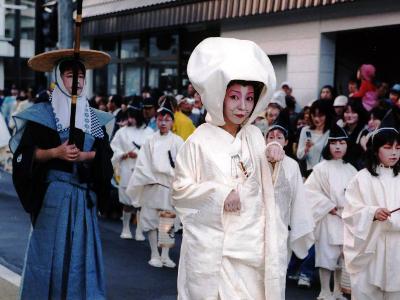Hyakumonozoroe Sennin Musha Gyoretsu (the 1,000 Samurais Procession Festival) is the revival of the ceremony held when the divine spirit of Ieyasu Tokugawa was moved from Mt. Kuno, Shizuoka Pref. to Nikko. This is the highlight of the annual celebrations at Nikko Toshogu Shrine, Tochigi Pref.. The festival is held twice a year on May 18th and Oct 17th. The authorized name is Shinyo-togyo (moving of divine portable shrines). The grand procession leaves Nikko Futara Shrine on the morning of May 17, marching along are promenades, bow carriers and over one thousand warriors in armor who guard the three divine portable shrines respectively enshrining the spirit of Ieyasu, Minamoto no Yoritomo and Hideyoshi Toyotomi. The next day on 18th, the shrines move to Otabisho Shrine through the 1km long road of Omotesando (front approach). Every year tens of thousands of tourists come to see this highlight event.
















